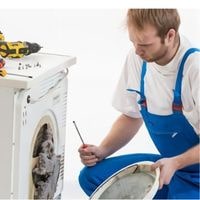Roper Dryer Not Heating. Some Roper dryers, including those that use gas and an electric heating element, can be prone to not working at all.
When they lose their heat and aren’t drying clothes or don’t get hot enough, it’s important to figure out the problem if you want your appliances to last.
These types of problems could be a simple fix, in some cases requiring nothing more than tightening two screws on a terminal block.
But there are other issues with the heating element which may require full replacement of the elements themselves, a costly repair most often performed by professionals.
Roper Dryer Not Heating
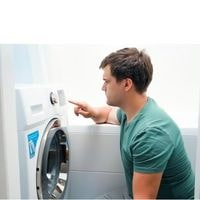
Common issues with dryers include a tripped circuit, venting issues, and no gas.
Another possibility is to check the thermal fuse for heating problems in the wiring and also check for blown fuses within the heater assembly itself.
There’s a high probability that these issues may be caused by owner neglect and an inability to properly maintain their home appliances.
Here we discuss some tips on how to fix your dryer when it’s not heating.
The Correct Voltage
The reason that your dryer won’t heat up might be that it isn’t receiving enough electricity to function.
The following steps will help you determine whether the dryer is plugged in: First, make sure it is plugged in. It is possible to turn on all circuit breakers by pressing a button or turning them on in the fuse panel.
In addition, make sure that no fuses have blown in your fuse panel as a result of overusing the electricity.
Thermal Fuse Problem
Designed to prevent the dryer from overheating, the thermal fuse is a very important device.
On electric dryers with heating elements and gas models with burners, the fuse is usually found either on the blower housing or at the dryer’s heat source.
Normally, a fuse should be closed for continuity, meaning that it has an uninterrupted electrical path.
When it heats up, the fuse loses continuity, signifying that the electrical path has broken and it has blown.
The multimeter can be used to check for continuity, but be aware that a blown thermal fuse indicates your dryer exhaust venting isn’t working properly and needs to be inspected.
Thermostat With High Limit
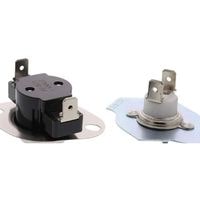
To avoid overheating, a high-limit thermostat is installed.
High-limit thermostats prevent a potentially dangerous situation from occurring by turning off the gas valve when the dryer overheats.
A defective thermostat can prevent the thermostat from stopping the burner, even if there is nothing wrong with the dryer.
In rare cases, a thermostat may be defective, but you should first check the other parts.
Typically, ignitors, gas valves, thermal fuses, and gas pressure regulators are found to be faulty.
Check other components before replacing a thermostat to make sure the problem is not with one of them.
Assembly For Heating Element
When the air enters the drum of your dryer, it is warmed by the heating element. It is possible for the heating element in your dryer to wear out over time, causing it to not heat.
A multimeter will reveal no continuity if the heating element has burned out. You can try troubleshooting and determining if the heating element has burned out using this method. No heating element means the heater needs to be replaced.
Defective Flame Sensor
Checking the flame sensor make take a little bit of time but in the end, you will most likely be able to pinpoint your problem and fix it quickly.
Before doing anything else, you should make sure that the igniter or thermal fuse is not at fault for malfunctioning in the first place because then you would need to address that before moving on with testing.
One defining way to figure out whether or not your flame sensor needs to be replaced is if it’s been found lacking continuity at room temperature.
If this happens, then there shouldn’t be a question as to whether or not the flame sensor has gone bad in one way or another and needs to be replaced.
Igniter Issue
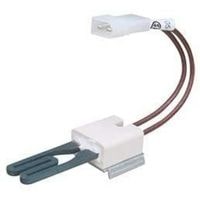
In the laundry setting up process, the igniter is responsible for kicking off your laundry installation.
The central heating will stop working if it fails, so you’ll know about it when you can’t get heat.
You can determine if an igniter needs to be replaced by using a multimeter to check for continuity.
Before using a multimeter or any other electrical device, however, verify that the igniter’s two terminations are soldered together.
You only need to replace the dried-out igniter if that doesn’t work – yep, replace the igniter.
Gas Valve Solenoid Failure
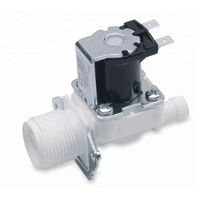
Gas dryers use two or more valve solenoids to control the flow of gas into the range’s burner.
If your dryer is not heating, it could be a problem with one or more of the gas valve coils. The best way to test this is by examining the igniter.
The igniter senses when you press a button on your dryer and provides hot gases through the burners to start them up.
If, for some reason, it does seem as though there are no issues with the igniter and it just doesn’t light up, then this means that one of your valve solenoids has failed.
Roper Dryer Not Heating
Related Guides
